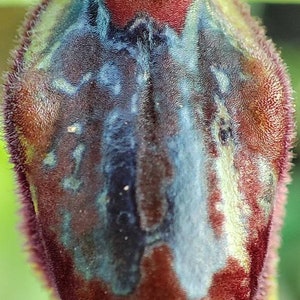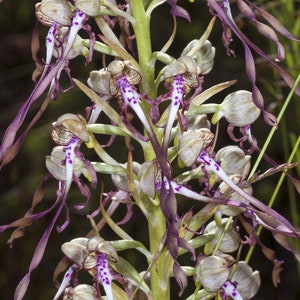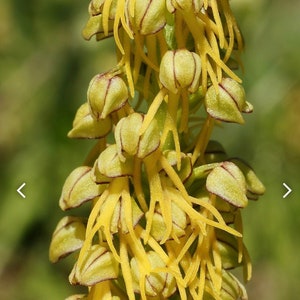

Orchid
Orchidacées Ophrys lutea One bulb
$6.52 $8.70
-
DetailsOur bulbs are grown in red clay on our farm. We package them in moss for safe travels to you.
(If you are experiencing any problems during checkout ie. "Item not available in your area." Contact us and we can sort this out for you.)
Orchidacées Ophrys lutea,
Watch this video about the orchids we grow on our farm: https://youtu.be/Maytl3WiwaI
Grown on our farm in the Mediterranean foothills of the Pyrenees. These bulbs have been grown in Clay substrate and gently separated just before we package and send them to you. They will be packaged in moss to keep them moist on their travels to you. These 4-year-old plants are old enough to flower! Plants delivered dormant from October to April.
With good care and regular maintenance, an orchid plant may live for a lifetime — 100 years, or more.
These Orchids need very little care and deal well will dry weather.
Ophrys lutea, the yellow bee-orchid, is a species of orchid native to southern Europe, North Africa, and the Middle East, the range extending from Portugal and Morocco to Syria.
Broad asymmetric lateral sepals, dorsal sepal lowered.
Extended petals, yellow or with a blue-grey or brown spotted velvety macula. Pollinated by male Andrena bees. This species is notable among Ophrys for the fact that the pollinating bees sit on the labellum facing away from the pollinaria instead of facing towards them, and thus collect the pollinaria with their abdomen.
It is a plant in full light to partial shade on a limestone substrate of lawns, scrubland, light woods. It is early (the earliest followed by Orchis morio and Orchis pallens in the hills of eastern France) with flowering in March to May.
Its distribution area is centered on France.
Choose a planting site that receives dappled to partial shade. If you live in a growing region that is very hot and dry, you will need to choose a location that receives a bit more shade than sun. Plan to plant your orchid bulbs in the spring when the threat of frost has passed in your growing region.
Dig holes with your fingers or a small trowel. The holes should be 3 to 4 inches deep and 2 to 3 inches wide. Space the holes 12 inches apart.
Place a bulb into each hole and lightly pack the soil around the bulbs. Gently tap down on the soil to ensure that no air pockets remain around the bulb. Water thoroughly and plan to water whenever the soil dries out. When the bulbs begin to sprout and grow, mist them every day or two with a water bottle.
Fertilize every two months during the growing season with a liquid plant fertilizer that is at half strength. -
Shipping & Policies
Shipping from France
Processing time
1-2 business days
Customs and import taxes
Buyers are responsible for any customs and import taxes that may apply. I'm not responsible for delays due to customs.
Payment Options
Returns & Exchanges
I gladly accept returns, exchanges, and cancellations
Just contact me within: 14 days of delivery
Ship items back to me within: 30 days of delivery
- Custom or personalized orders
- Perishable products (like food or flowers)
- Digital downloads
- Intimate items (for health/hygiene reasons)
- Items on sale
Conditions of return
Buyers are responsible for return shipping costs. If the item is not returned in its original condition, the buyer is responsible for any loss in value.
Questions about your order?
Please contact me if you have any problems with your order.



